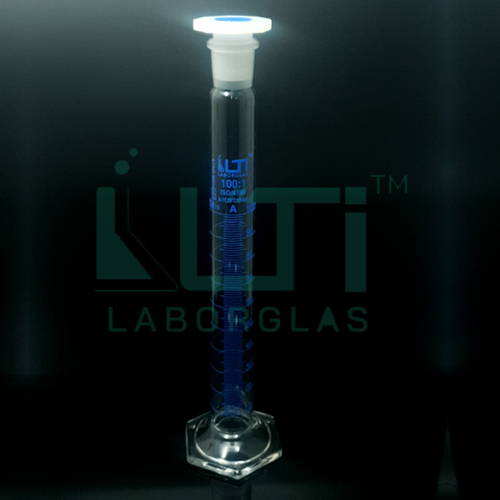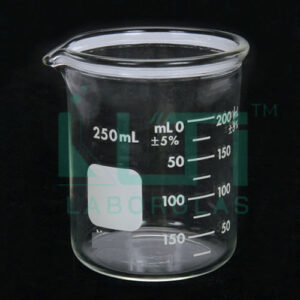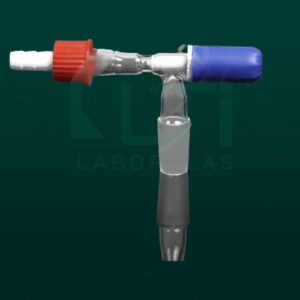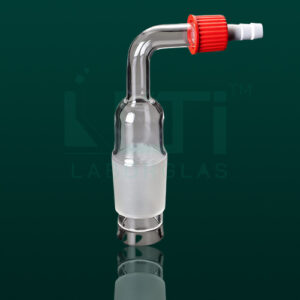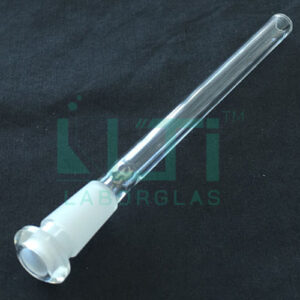- Complies as per DIN EN ISO 4788 standards
- With Individual work certificate
- With PE stopper
* Non DIN
| PART No. | Capacity (ml) | NS SIZE | SUB DIVISION (ml) | ±Tol.(ml) | Pack QTY. |
| 3880-5* | 5* | 10/19 | 0.1 | 0.05 | 2 |
| 3880-10 | 10 | 10/19 | 0.2 | 0.10 | 2 |
| 3880-25 | 25 | 14/23 | 0.5 | 0.25 | 2 |
| 3880-50 | 50 | 19/26 | 1.0 | 0.50 | 2 |
| 3880-100 | 100 | 24/29 | 1.0 | 0.50 | 2 |
| 3880-250 | 250 | 29/32 | 2.0 | 1.00 | 2 |
| 3880-500 | 500 | 34/35 | 5.0 | 2.50 | 2 |
| 3880-1000 | 1000 | 45/40 | 10.0 | 5.00 | 1 |
| 3880-2000 | 2000 | 45/40 | 20.0 | 10.00 | 1 |
Here are some common uses for such a mixing cylinder:
- Accurate Mixing of Solutions: The mixing cylinder is utilized for the accurate and precise mixing of liquid components in specific ratios, ensuring reproducible results in various laboratory applications.
- Analytical Chemistry: In analytical chemistry laboratories, this mixing cylinder is employed for preparing standard solutions or reagents with precise concentrations needed for analytical methods and procedures.
- Quality Control: Industries, particularly pharmaceuticals and chemicals, use mixing cylinders for quality control processes, ensuring the accuracy of mixed solutions in manufacturing processes.
- Sample Dilution: Laboratories use mixing cylinders for diluting samples accurately, especially in applications where maintaining a specific concentration is crucial.
- Chemical Reactions: The mixing cylinder can be used in controlled chemical reactions where precise mixing is essential for achieving desired outcomes in research or manufacturing processes.
- Titration Procedures: Mixing cylinders are valuable in titration experiments for preparing solutions with accurate concentrations, ensuring reliable and accurate titration results.
- Educational Purposes: Mixing cylinders are commonly used in educational settings for teaching students about liquid measurements, mixing techniques, and the importance of precision in laboratory work.
- Research and Development: In research and development laboratories, the mixing cylinder is useful for developing new processes, methods, or formulations that require precise liquid mixing.
- Pharmaceutical Formulations: In pharmaceutical laboratories, mixing cylinders are employed for preparing formulations with precise concentrations of active ingredients and other components.
- Environmental Analysis: Laboratories involved in environmental analysis may use mixing cylinders for preparing standard solutions or reagents with accurate concentrations for water quality testing or pollution monitoring.
- Hexagonal Base Stability: The hexagonal base design provides stability during mixing, minimizing the risk of accidental spills or tipping over, which is crucial in applications requiring accuracy.
- Industrial Applications: In certain industrial processes where a high level of precision is required, Class A mixing cylinders with a hexagonal base may be used for critical mixing tasks or quality checks.
- Serialized Traceability: The individual work certificate and compliance with DIN/ISO standards provide traceability for the instrument, ensuring documentation of its calibration history and usage.

